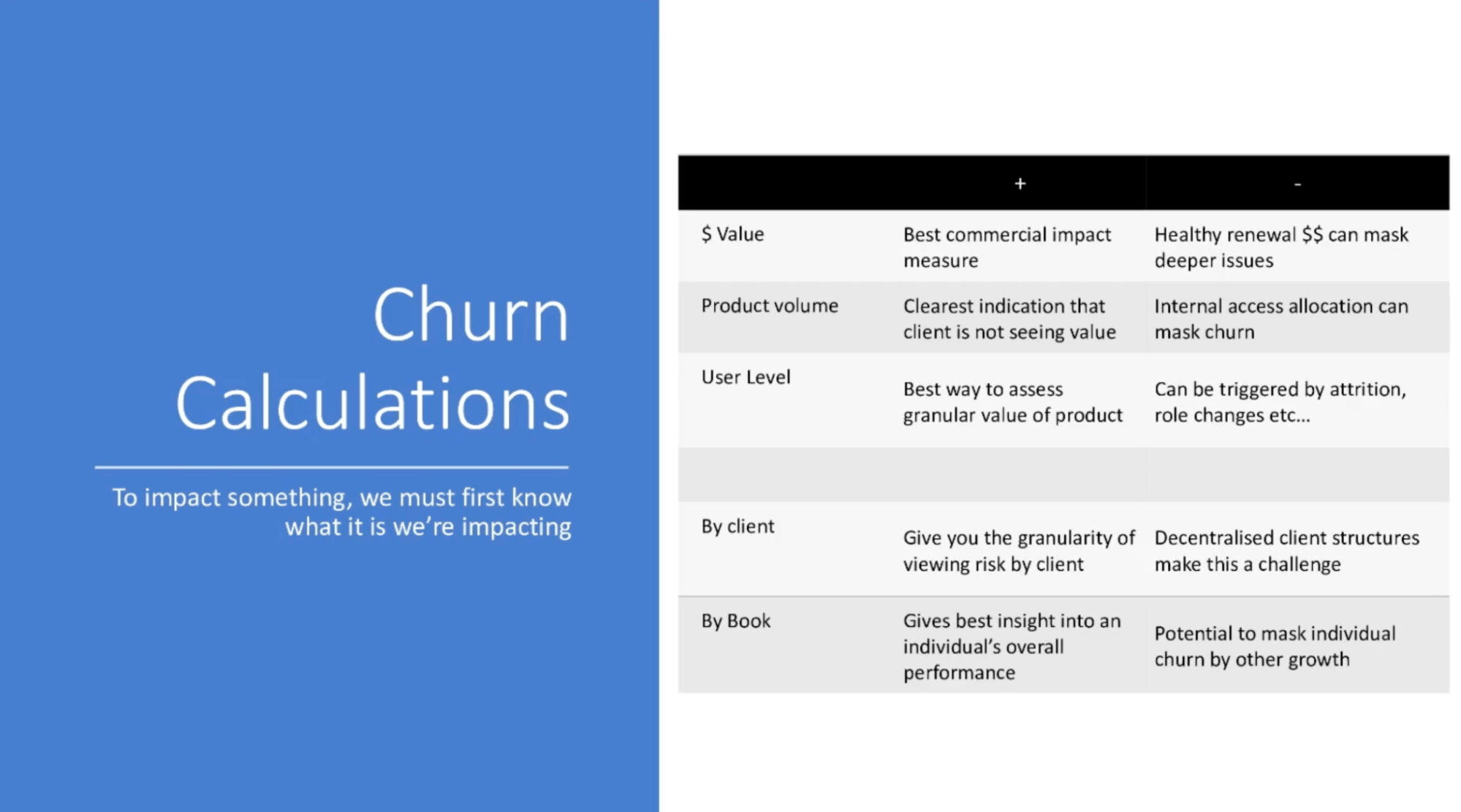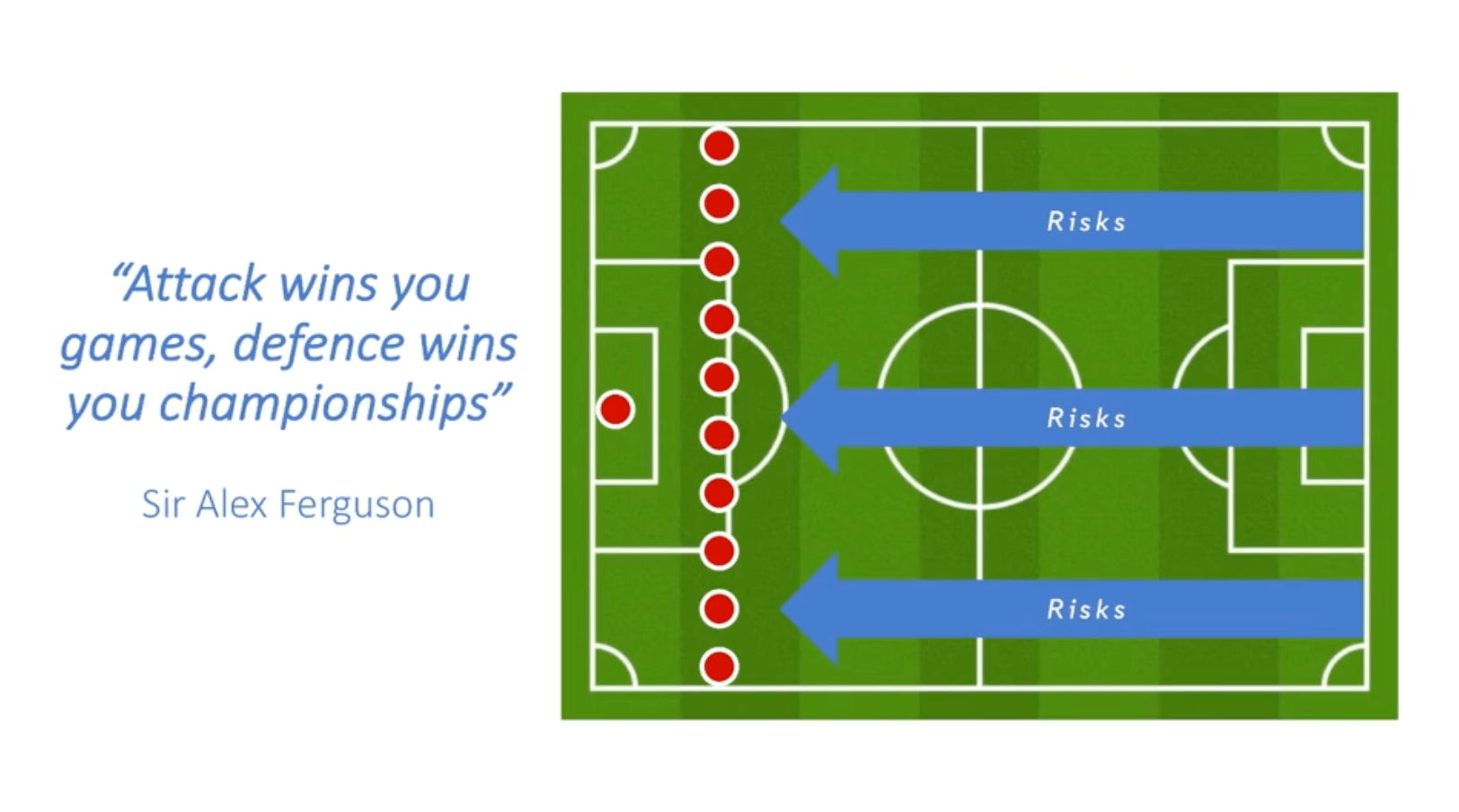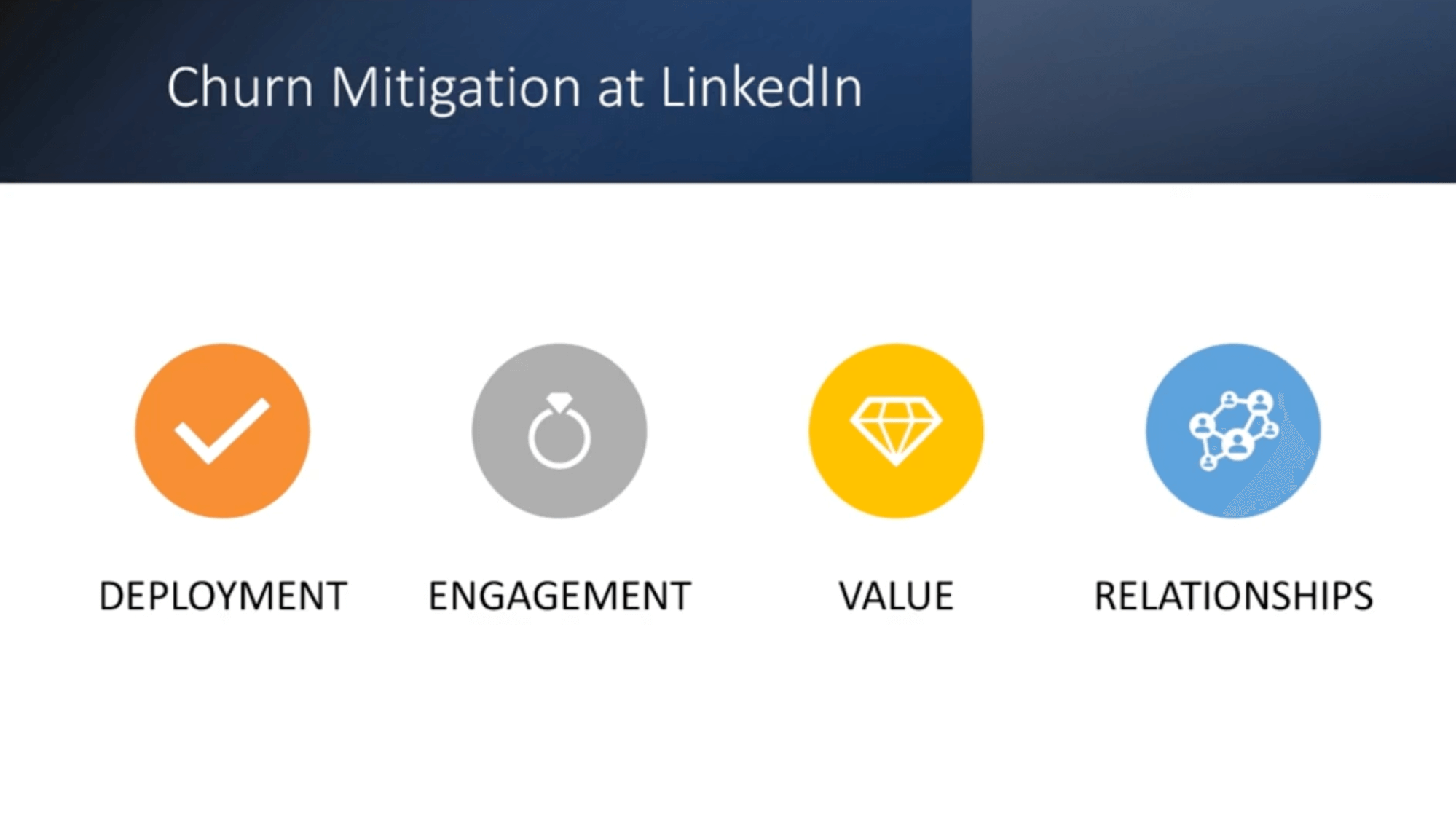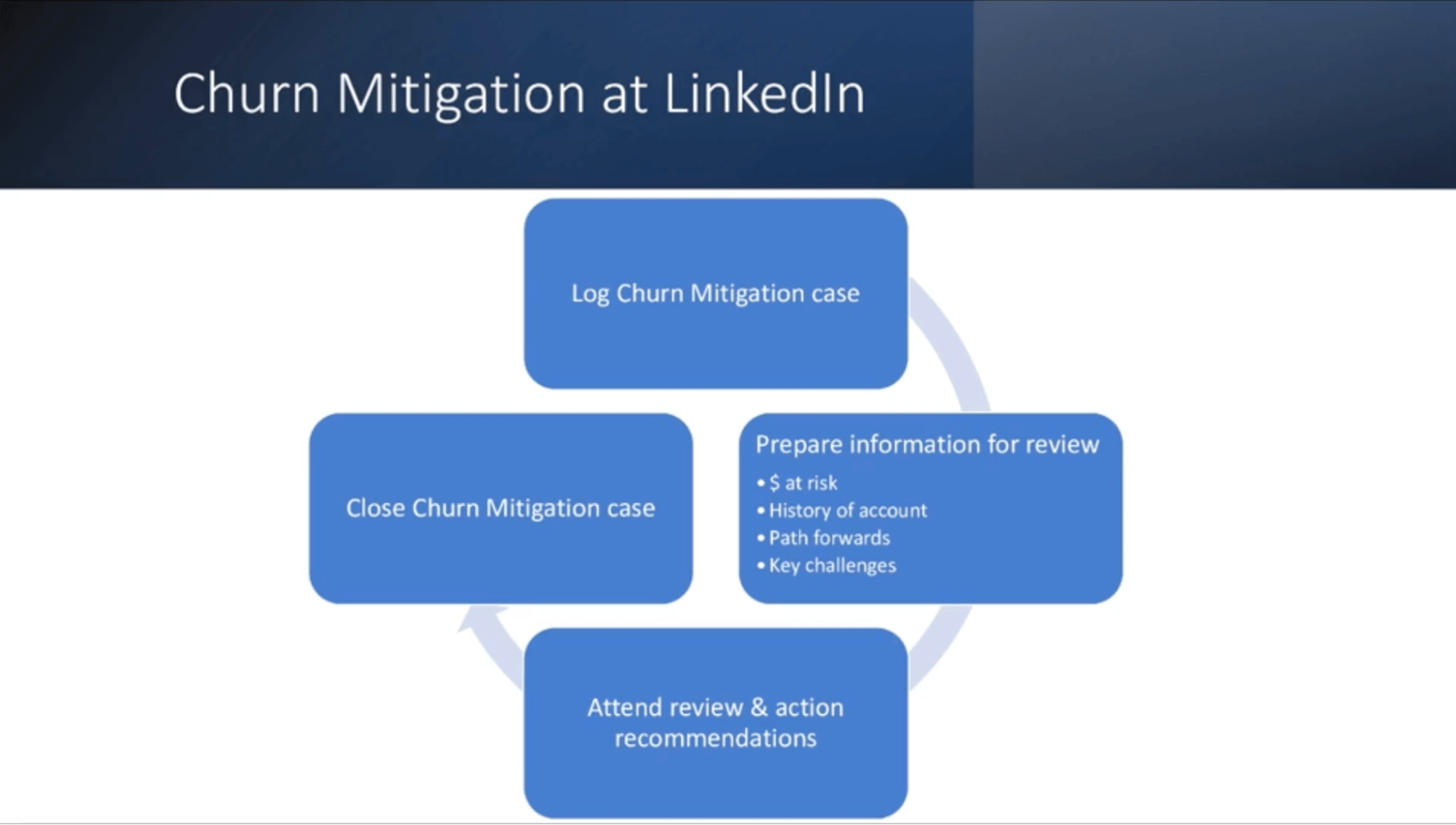My name is David, and I work at LinkedIn, where I lead a team of customer success managers out of EMEA. We work with the largest global clients in the LinkedIn Sales Solutions business.
We're very high-touch; each of my team only has a small number of accounts, so they get deep into those businesses and get to know them well.
When I first joined the customer success team in the Singapore office quite a few years ago, I'm not going to lie, I honestly didn't know what customer success was. I spent a while trying to figure this out.
In fairness, many people are still trying to figure out exactly what CS means to them and their companies. We're a pretty young function after all.
Conversely, if you spoke to an accountant 50 years ago about what accountancy was, you'd get a pretty similar answer to if you asked an accountant now. While CS hasn't existed that long, I believe that one thing we all CS teams have in common is a desire to deliver value to our clients, and in doing so, mitigate the risk of churn.
Why customer churn?
So what exactly is churn and why, in CS, are we so obsessed with it? Well, for those of you who haven't heard the story, I'll give a quick précis.
Back in the early 2000s, when the concept of SaaS was just getting going, some very smart people at Salesforce realized that, despite their very impressive client acquisition rate, if they continued to have existing clients reducing or canceling their spend at the rate they were, they'd soon have to start trying to resell contracts.
I don't know if you've ever tried to convince somebody that they should be spending their time, effort, and money on something they've already decided they don't want, but saying it's not easy is an understatement. It's certainly not as easy as keeping them happy in the first place. Thus, churn as a concept was born.
Since then, we as a function have become quite obsessed with it. Why? Well, in a function that is not fully commercially focused, it’s useful to own a number.
In different companies, customer success managers might own the renewal number or the growth number for example, but in many companies, LinkedIn included, we don’t. The churn number is something we can hang our hat on as a commercial justification for our existence.
It's also a common language with our sales partners, and it's one that boards, investors, and shareholders all understand. You don't need to explain complex usage metrics and their benefits; when you talk dollars and cents, people understand.
I appreciate that there can be good churn. Low churn over a portfolio indicates that you're not underselling accounts, and that can be good. There's also unavoidable churn when a company goes bankrupt, for example.
There's false churn too when a contract needs to be canceled to be built into a bigger contract. I know all of those things, but for the purposes of this article, I'll treat all churn as real, bad, and avoidable.
Churn calculations
At this point, you might be thinking, “Look, Dave, we all know what churn is. Crack on, will you?” I will, but first I’d like to take a moment to challenge the notion that there’s only one way to measure churn.
It's vital that we measure churn and deeply understand what it is we're measuring. You can’t stop something from happening if you’re not crystal clear about what it is you're trying to stop; it also makes it almost impossible to know if you've been successful.
How you define churn in your business can vary massively depending on your sector, your product, your renewal cycle, and whether your CSMs are responsible for engagement, renewal, or growth.

If you're planning on setting up a churn mitigation project or you're looking to refine your processes, re-examining your churn metrics is a good starting point. You need to know what data points could trigger a churn risk review. For example, are you happy to turn a blind eye to some reduction in products sold if the book value is maintained? If so, to what extent?
In a different example, if you've observed that when licenses are passed between different individuals on an account, you end up losing business overall, that might be something that you want to target. You get my point – there are different combinations of factors that you can look at.
It's also critical that you're clear about the level at which you're measuring these triggers. Are you looking at the client level? If so, are we talking about the ultimate, overarching umbrella company level? Are you looking at the subsidiary level? Or are you looking at the individual user level?
Finally, you could be looking at churn as a book-level metric. If you’re measuring churn per CSM, different factors come into play. One client could be offsetting another client's churn, for instance.
The importance of a strong defense
Now that we're clear about what we're measuring and why we're measuring it that way, let's stop talking about churn for a moment.
Instead, I'd like to talk briefly about football – that’s soccer for any American readers. I promise this isn't going to get too complex. I'm not going to be talking about offside law or the complexities of the new video refereeing system.
This is going to be more on the level of Ted Lasso learning that there are 11 players on a team; that's the level I'm comfortable at.
Sir Alex Ferguson, one of the greatest football managers of all time, said “Attack wins you games; defense wins you championships.” I mention this because we in CS are often seen by the wider business as the defense. “Defend the base!” is a rallying cry I hear quite often.
The logic is that if we maintain our clients’ current spending, others can go about growing it. That’s fair enough. You won’t hear any arguments from me on this logic.

But what's the best way to defend? Imagine you’re on the pitch with risks coming at you, so you line up all 10 of your players in a defensive life, with the goalkeeper behind them. Logically, that should block the attacks, right?
But there's a good reason why you tend not to see football teams lining up 10 defenders in a row, inviting the opposition to attack them. The reason for that is that it only takes one tiny slip, one moment of distraction as a player looks at the crowd, and suddenly that attack is so close to the goal that there's a strong likelihood of something going very wrong.
Let's be honest; this is what churn mitigation can look like. It's easy for your formation to fall into this pattern. A client contacts you pre-renewal and says “Sorry, we're not going to renew this year.”
Queue complete panic in the organization. The sales teams are freaking out. The customer success team is getting blamed for what happened and for not identifying the risk early enough.
The best defenses in football don't rely on waiting for the opposition to come to them. They take their defense to the opposition. Their attackers close down the other team, far away from their own goal, to stop that attack at the source.
Let’s bring this back to CS (I've stopped talking about football now, I promise). It shouldn't just be up to CSMs to spot this risk and then do something about it. It's up to everyone involved in the account to look at potential risks and then push forward as far and as fast as possible to mitigate that risk so it never develops into a threat to revenue.
Churn mitigation at LinkedIn
At LinkedIn, we try very hard to mitigate churn at its source as early as possible. We do this by focusing on four key data points. These data points might vary for you, but they’re a useful starting point for most subscription products.

First of all, we have a threshold for license deployment. This has been calculated by our fantastic CS ops team. We know from historical data that if a client falls below this threshold, they're statistically less likely to renew or renew in full.
We give the client time to deploy licenses and get them active, but if they fall below this threshold for a sustained period, then we move to a review.
The same is true of engagement. If we're seeing a below-threshold pattern of usage of certain key features that we know should be used in order to bring success, then we get a little red flag.
Value is central to everything that we do in CS. The problem is It can be really devilishly hard to pin down what value means. Each client is going to define it slightly differently, the fact is that if they say that they're not getting value, then that's their reality.
That's a real difficulty because we may need to redefine value with our client. This can be especially difficult if we're towards the end of a contract, and they’ve been oversold, mis-sold, or just got the wrong end of the stick at the induction. Maybe they thought this tool was going to cook them breakfast, and then they learn it can't.
Finally, we keep a close eye on our relationships with our clients. CSMs are not on-site, and they're not employed by the client's business, so we’re wholly reliant on program managers, executive sponsors, and advocates within accounts to make things happen the way we want them to.
If one of those people leaves, a key supporter is replaced by a potential detractor. That’s when the process I’m about to describe swings into action.
Deployment, engagement, value, and relationships are tracked through a variety of systems, and they’re all fed through to CSMs and flagged when there’s an issue.
The process we follow when an issue comes up isn't rocket science, but it is really important that we follow it closely. The reason it's so important to stick to this process is that we're not only then able to make a consistent impact on potential churn, but also to track the effectiveness of our efforts.

The process
First, upon a churn risk review being triggered, the CSM logs a churn mitigation case in our CRM. This alerts a team of senior CSMs who own risk mitigation within our org. They then set up a review, normally a couple of weeks after the case has been raised.
To this review, they invite the CSM, the sales partner, and at least two managers who are not directly managing the CSM. Where appropriate, they may also invite a sales leader, as well as anyone else who may have relevant input, such as integration specialists and insight analysts.
The CSM and the sales partner prepare a pre-read for the review, which is a pre-built deck that they just need to populate with certain information. This includes some of the obvious, like the amount of risk along with a potted history of the account, why we're in the situation we're in, and what's been tried so far.
This enables us, once we're in the review, to probe for more information, uncover potential strategies, and formulate a plan. It’s really helpful that we have other voices in the mix because they bring in knowledge gleaned from other clients and sectors, which can be invaluable and may have been missed the first time around.
The CSM in charge of churn mitigation attends this call, takes notes, and circulates a list of key actions to everyone on the call, including the manager of the CSM, whose responsibility it is to then follow up and make sure all of these actions are taken.
Once this has all been done, the renewal date rolls around, and hopefully, there's no churn. Even if there is churn, we close the churn mitigation case in the CRM along with a standardized rationale for why it's been closed.
We also record whether they churned, partially churned, renewed, or grew. When there is churn, we look to capture the percentage. This means we're not only looking to identify risk early and crowdsource knowledge to mitigate it, but we're also recording how effective our efforts are, so we can continue to refine our process.
Churn mitigation case study
A great example of this process in action came from one of my team when she was in her previous role, based in the US. She had a client who had been badly hit by COVID – lots of our hospitality clients were.
This client churned completely and rebought once things started picking up again. We had a strong relationship with the client’s key stakeholders thanks, at least in part, to the fact that we had supported them when they were in dire straits and needed to churn.
Then, in a regular check-in, the CSM learned that this client was looking at reducing their spend with us in favor of a competitor. We followed the process – the churn mitigation plan was raised, and the risk review was scheduled. This was about three months out from the renewal date, so we had enough time to work on this case.
From the initial review, it became clear that we didn't know exactly what was missing in terms of value from the client's perspective or how they were assessing our product versus our competitor, However, because we had a good relationship, we were able to go back and find out what we were missing.
The team swung into full-on discovery mode and learned the client loved our product, but they didn't think it would have the same immediate impact that our competitor would have on their bottom line.
Once we knew what we were up against, the team reconvened, put together what they called a war room, and brought in internal experts who have studied the competitor and know how they deliver value.
In doing this, the team landed on a strategy of highlighting our ability to deliver long-term growth, relationship development, and sustainable sales, as opposed to quick wins. Three months was enough time for us to demonstrate this value to them by drawing their attention to data from their previous and existing usage and sale.
Fortunately, this story has a happy ending. The narrative they used really resonated with the client’s senior execs and how they wanted to do business, so we were able to renew at the same rate.
The future of churn mitigation
We're always looking to iterate and improve. Let’s take a peek into where we at LinkedIn want to go from here.
I’m looking to use my team's very privileged position of being an ultra-high-touch CS org to expand our scope of operations. I want them to look at risk not only when it pertains to churn or dollars being at direct risk, but also when we see a risk of anything that's suboptimal.
This could be that the account is growing, but we don't think it's growing as fast as it could be. It could be that a region is lagging behind another. Perhaps, for example, we're not servicing a region like EMEA with its multiple language requirements, as well as another region like North America where it's more homogenous.
An important shift in perception is needed as well; no matter how much we celebrate what are internally referred to as “churn-arounds,” I understand that for a CSM to raise their hand and say, “Look, my client’s not happy; I think they're going to churn,” is really tough.
I've been a CSM recently enough to know that there's a nagging fear at the back of your head that says, “What if I get blamed for this? Isn't it better to just stay quiet and see how things go?” Well, no, it's not.
We want to get on with mitigating risk as quickly as possible, so we're moving towards a process where the team gets used to flagging risks of all sorts on a weekly basis, so that we're always as far ahead of the curve as we can be.
We're moving towards a mentality where risk identification is openly celebrated and rewarded. In time – fingers crossed – we'll move towards a future where risk rarely, if ever, manifests itself as churn.
Key takeaways
So what would I recommend that you as CS leaders take away from today? There are four main points.
- Keep it simple - If you're looking to create or modify a churn mitigation process, try to avoid those complex workflows with arrows pointing in every direction.
- Make it repeatable - If you can run regular reviews, you’ll build this muscle with your team, making it easier for them to do and allowing them to get more out of the process.
- Make it measurable - The more reviews you run, and the better you set them up, the more data you will have and the better you’ll be able to iterate this process to build something sustainable.
- Make it a cause for celebration - It's absolutely vital that CS teams look at flagging risk not as a chore, not as a risk to themselves, but as something to be celebrated. Build it into your KPIs and personal development frameworks. Create categories for awards and shout-outs for risk identification.
If you can do all of this, you will – to paraphrase Sir Alex – win many games and many championships.



